Welcome to post 6 of 26 in the A-Z guide to living on the road full-time!
Living on the road full-time means being constantly on the look-out for places to stay. If you know what you want and what to look for, the search can be fun. However, if you’re indecisive by nature, aren’t sure how to find places, or have a tendency to overextend yourself on travel days, finding places to stay could turn in to a constant source of stress. I hope this post will give you some insight in to what your options are when it comes to finding places to park your home on wheels.
(Please note, I’m writing from our own personal experiences which primarily entail camping in the Western half of the US.)
RV Parks
RV Parks come in all shapes and sizes. Some simply offer a place to park and utility hookups, while some have everything from a clubhouse, pool, restaurant, fitness facilities, and more. Most RV parks fall somewhere in the middle. Due to the wide range of options, you’ll encounter a wide range of costs. Many RV parks offer nightly, weekly, and monthly rates though monthly availability is much harder to come by at popular RV parks.
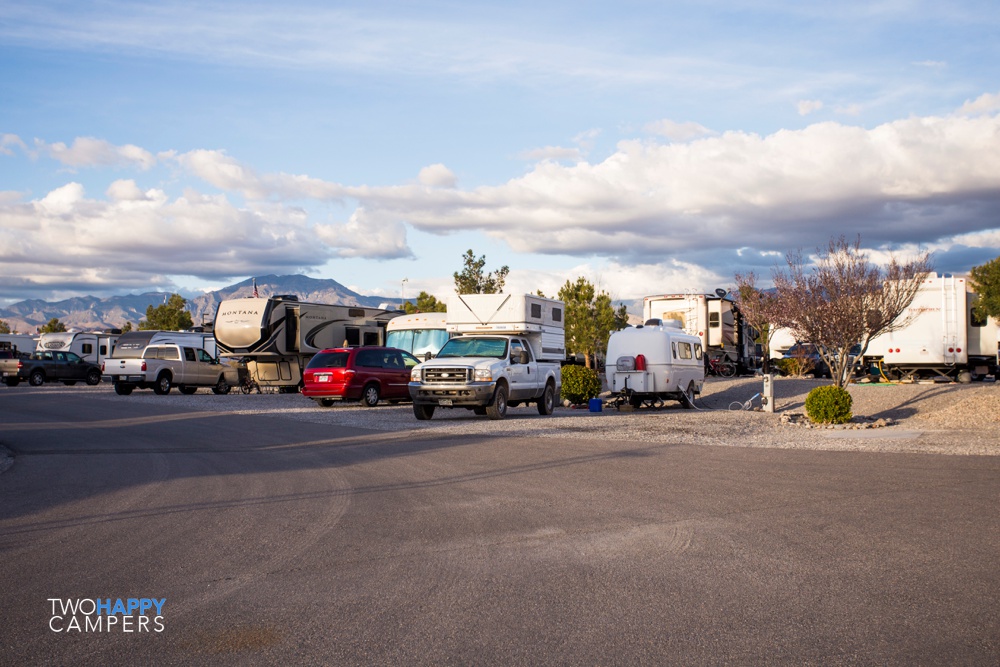
Pros for staying in RV parks:
- RV parks are a great way to stay in or near cities. Public land options near cities are hard to come by if not completely non-existent.
- RV parks offer the option for longer term stays where public lands have a 14 day limit.
- RV parks offer utility hookups (water, electricity and sewer).
- Many RV parks offer laundry and shower facilities.
- RV parks are a great place to socialize and meet other people that live on the road.
Cons for staying in RV parks:
- Staying at RV parks can get expensive. Nightly fees add up quickly, though weekly and monthly rates are a good way to get a cheaper rate.
- There’s no privacy or solitude. If you’re not a people-person you may tire of the close proximity to other folks.
- Reservations are often needed to get in to the more desirable RV parks so you’ll need to plan ahead.
- Rules & Regulations. Every RV park has it’s own rules & regulations that you’ll need to adhere to. You might come across restrictions such as a limit on how old of an RV is allowed, dog breed restrictions, size limitations and more.
Public Land
There are many types of public land available for camping. Getting to know the different types of public land and what each one offers will be helpful when looking for places to stay. Some have more restrictions than others with National Parks being the most restricted and BLM land the least. While public land is where you can find places to camp for free, that’s not true across the board.
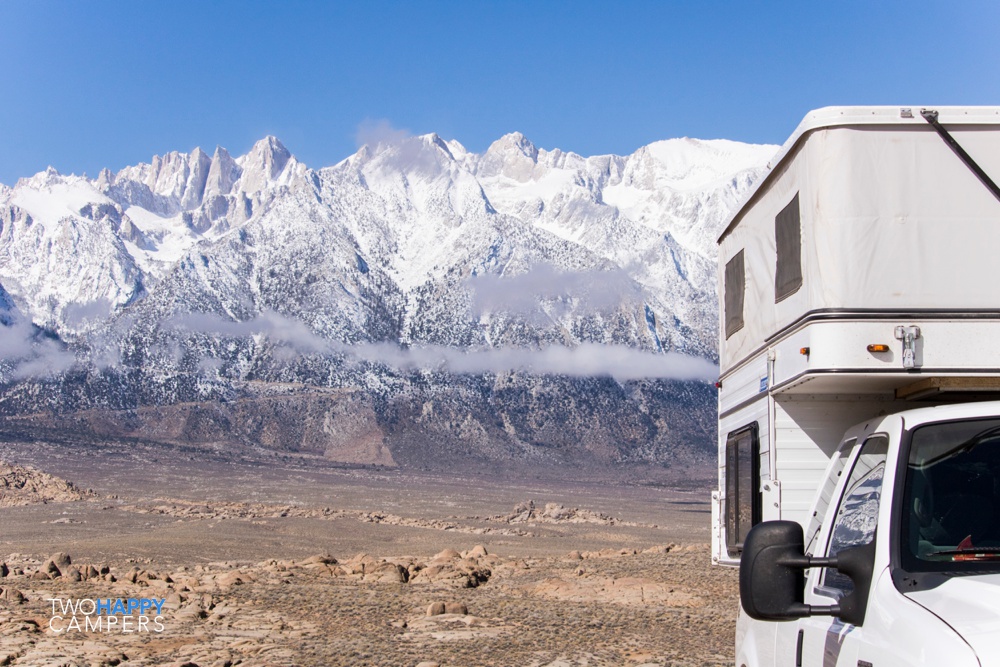
Five different types of public land available for camping
1. National Forest
National Forests offer both dispersed camping options and developed campgrounds. Dispersed camping is typically free with zero amenities. Campgrounds charge a nightly fee and typically provide a picnic table, fire ring, bathroom facilities (usually in the form of vault toilets), and a dumpster. Some, but not all, have water spigots.
2. BLM Land (Bureau of Land Management)
Same as National forests, BLM land offers both dispersed camping options and developed campgrounds. Dispersed camping is abundant on BLM land. Campgrounds on BLM land are usually primitive with just a place to park and maybe a vault toilet.
3. National Parks
Many National Parks have developed campgrounds and require reservations. There is a nightly fee for the campsite in addition to the fee to enter the park.
4. National Recreation Areas
National Recreation Areas offer numerous free and paid camping opportunities. Each rec area is managed either by the Forest Service or National Park Service. Links to many individual rec area websites can be found here.
6. State parks
Many state parks offer developed campgrounds with partial hookups (electricity and water) as well as bathroom and shower facilities. From our experience, state parks are more developed and often offer larger sites than National Forest and BLM campgrounds. Each state is different in regards to the fee structure and rules & regulations. Reservations are often required and can be made on each state’s individual state parks website.
Making Reservations
More and more campgrounds are by reservation only, creating the need to plan ahead. If you’re interested in staying in campgrounds on public lands, Recreation.gov is where you’ll go to make reservations. (This excludes state parks, each state has it’s own state parks website.)
Due to an ever-increasing demand in campsites, spots book out quickly. Typically sites become available for reservations on Recreation.gov 6 months in advance. If you’re interested in making campground reservations in a popular area, I recommend making plans as far in advance as possible.
Dispersed camping on public lands is always first come, first served with a 14 day stay limit. (More popular areas may have a shorter stay limit.)
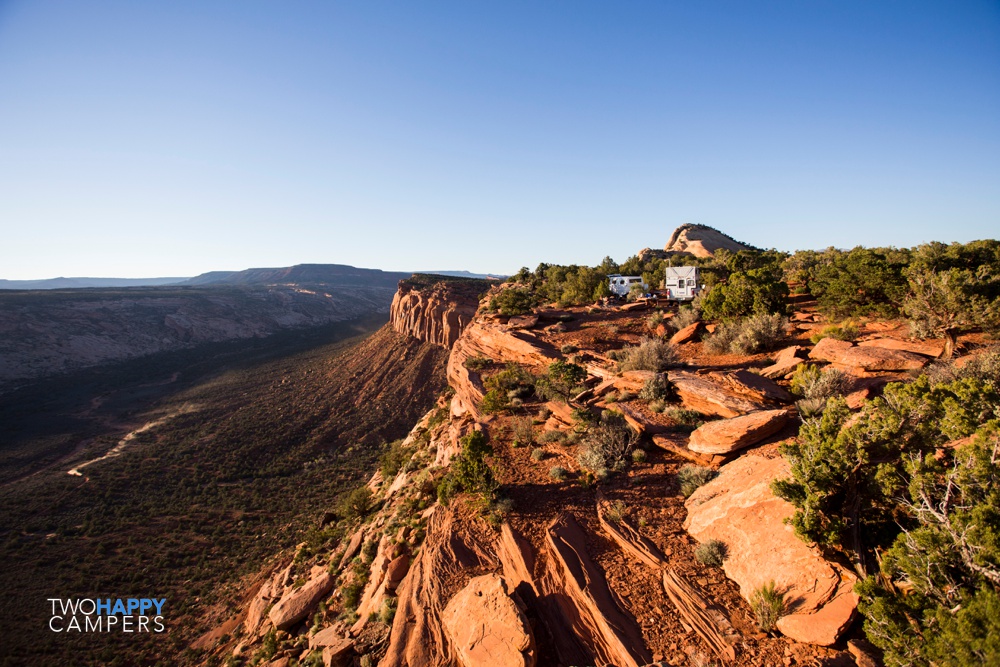
Unique camping options
Harvest Hosts
Harvest Hosts is an RV membership program with an annual fee that allows for unique camping opportunities at places such as wineries, breweries, and farms across the country. In addition to the annual fee, it is customary to patronize the business whose property you are parked on. This is a great way to experience a new town and it’s local offerings. Camping at Harvest Hosts locations is limited to one-night stays. For more details check out their FAQ page here.
Hip Camp
Hip Camp is like AirBnB but for finding places to camp on private property.
Boondockers Welcome
Owned by Harvest Hosts, Boondockers Welcome is another RV membership program with an annual fee. Membership grants you access to thousands of options for overnight camping on private property across the country. The allowed duration of stay is dependent upon the host with 5 nights being the maximum allowed stay within a 90 day timeframe. For more details, check out their “How it works” and FAQ page here.
Options for convenient one night stays
Sometimes, when you have a lot of miles to cover, all you need is a place to park and sleep. Here are a few popular options for a convenient, no-frills place to park. (Check with a store manager or an app like iOverlander first to confirm that your location of choice allows overnight parking.)
- Cracker Barrel
- Wal-Mart
- Truck stops
- Fairgrounds
In my opinion, the options above should be reserved for big travel days as they’re merely convenient, not necessarily enjoyable, places to stay. They’re simply a place to park for a night or two and moving spots that often on a long-term basis is a recipe for decision and travel fatigue.
Apps for finding places to stay
- Campendium
- iOverlander
- All Stays
- Google satellite imagery
- Gaia maps
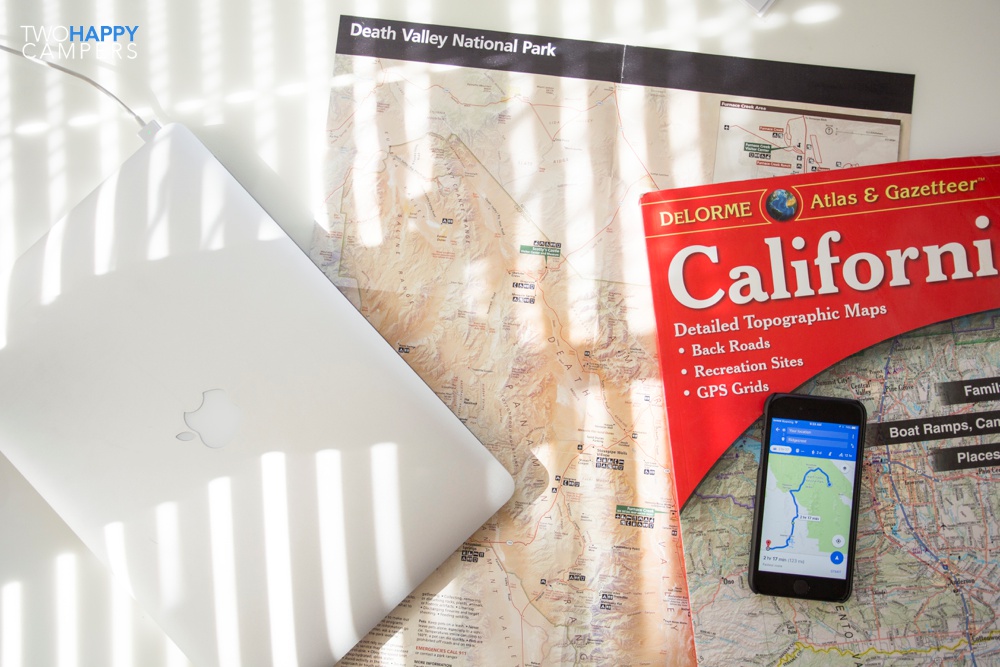
If you love a good paper map
We love DeLorme Atlases and Gazeteers. Many of these maps (but not all) have a great public lands overview of the state. We often use these to get a big picture idea of where we might be most likely to find camping on public lands in a particular state.
States with tons of public land that we use DeLorme maps for:

How we find free camping
We primarily camp for free on public lands. When we’re in search of a place to stay, it usually looks a little something like this…
- Decide on the region we’d like to go. Consider time of year and temps to hone in on an area.
- Use either a Delorme paper map or Gaia (online) maps to see where there is public land in that area.
- Look at topo maps for the area we’re interested in to see if there are any areas of interest such as a river valley, a bluff, canyon, etc.
- Surf any areas of interest on Google satellite imagery to see if dispersed campsites are available. You can usually tell by seeing a little bald spot where someone has previously parked (This is easy in forested satellite imagery but not as easy in desert locales).
- Drive and simply follow your curiosity.

Other ways to find places to camp
- Talking with other travelers is a great way to learn about desirable places to go.
- Stopping in to a ranger station or visitor’s center can be a good source of information on where to go.
- Reading blogs written by fellow RVers
This post by no means covers every single option available for camping in the United States but if you’re just getting started in this lifestyle, I hope it gave you a good idea of what’s out there. Since this post is simply written from our own personal experiences, we’d love to hear in the comments about your preferred places to camp!

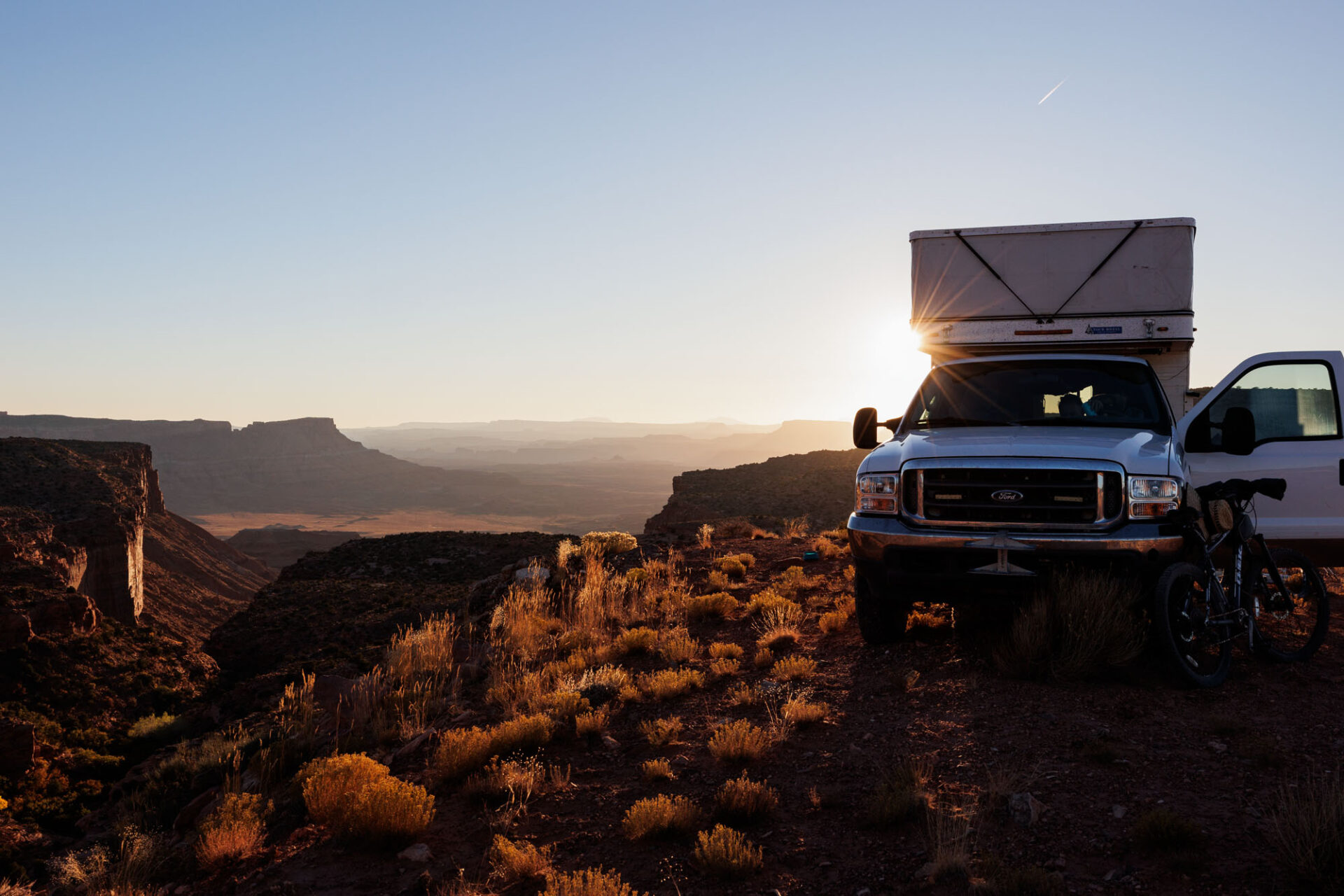
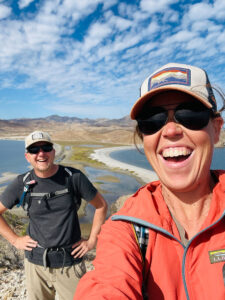
You should add Maine to this list of Delorme maps – it’s very good!
Good to know, thanks!